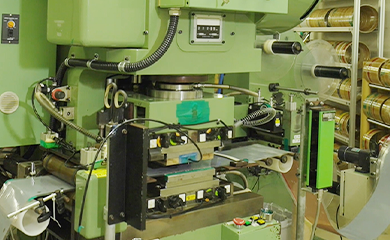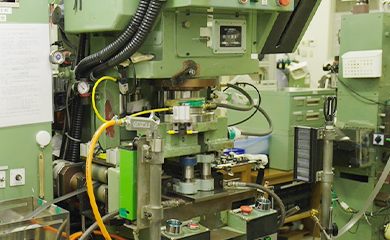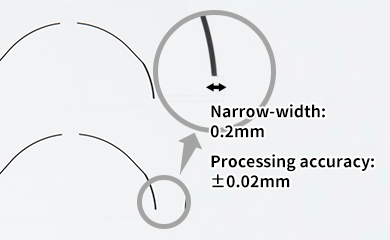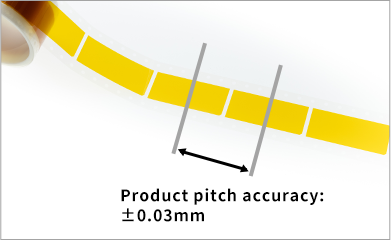SERVICES
Double-sided adhesive paper, resin film/sheets,
heat-dissipating materials, and metal foil pressing
We perform highly precise and intricate pressing of a wide range of materials, including double-sided adhesive paper, resin films/sheets, heat-dissipating materials, and metal foils.
We thoroughly understand customers’ needs down to the details and offer material suggestions, configurations, and shapes that can improve workability, yield, and cost reduction within their operational processes.


Technical Information
- Processing accuracy in film processing: ±0.02mm
- Narrow-width processing in double-sided tape processing: 0.3mm, Narrow-width processing in film processing: 0.2mm
- Processing accuracy of multiple press steps: ±0.05mm
- Product pitch accuracy in roll processing: ±0.03mm


- Minimum product size: φ0.8mm, Maximum product size: 500mm × 1,450mm
- Minimum thickness of processing material: 0.005mm, Maximum thickness of processing material: 50mm
- Processing speed of 60,000 pieces per hour